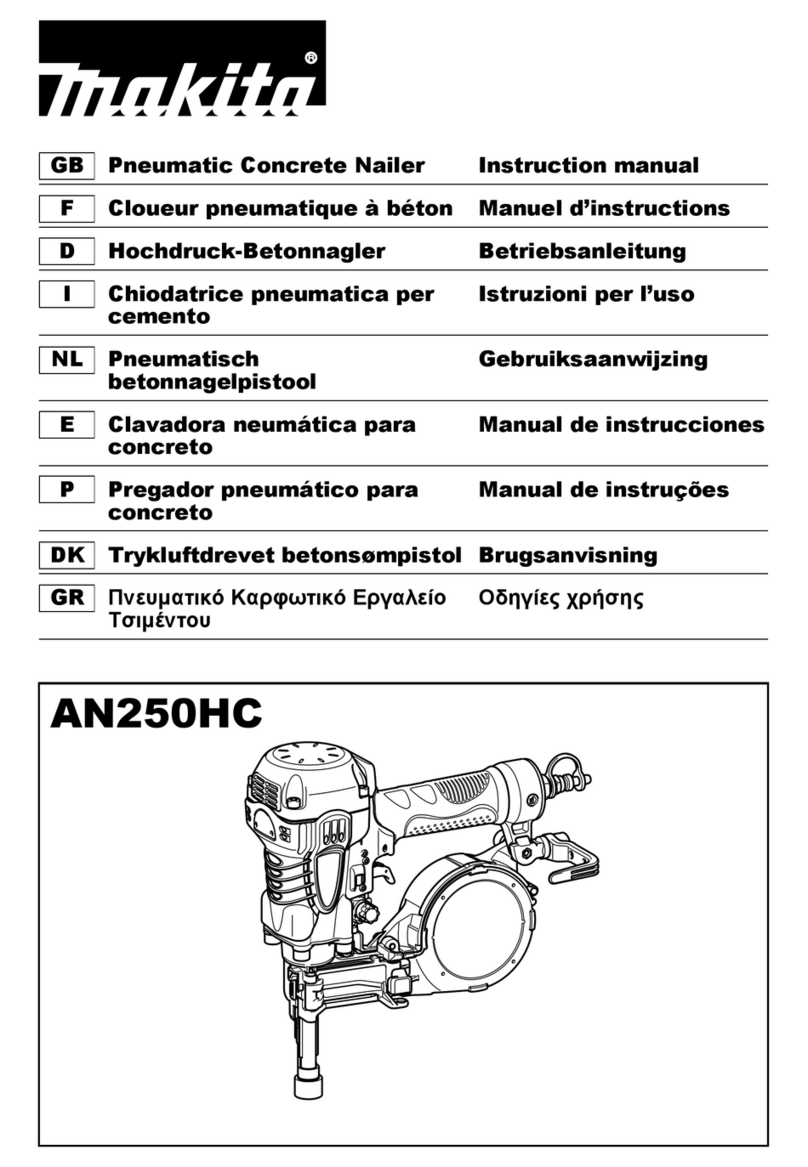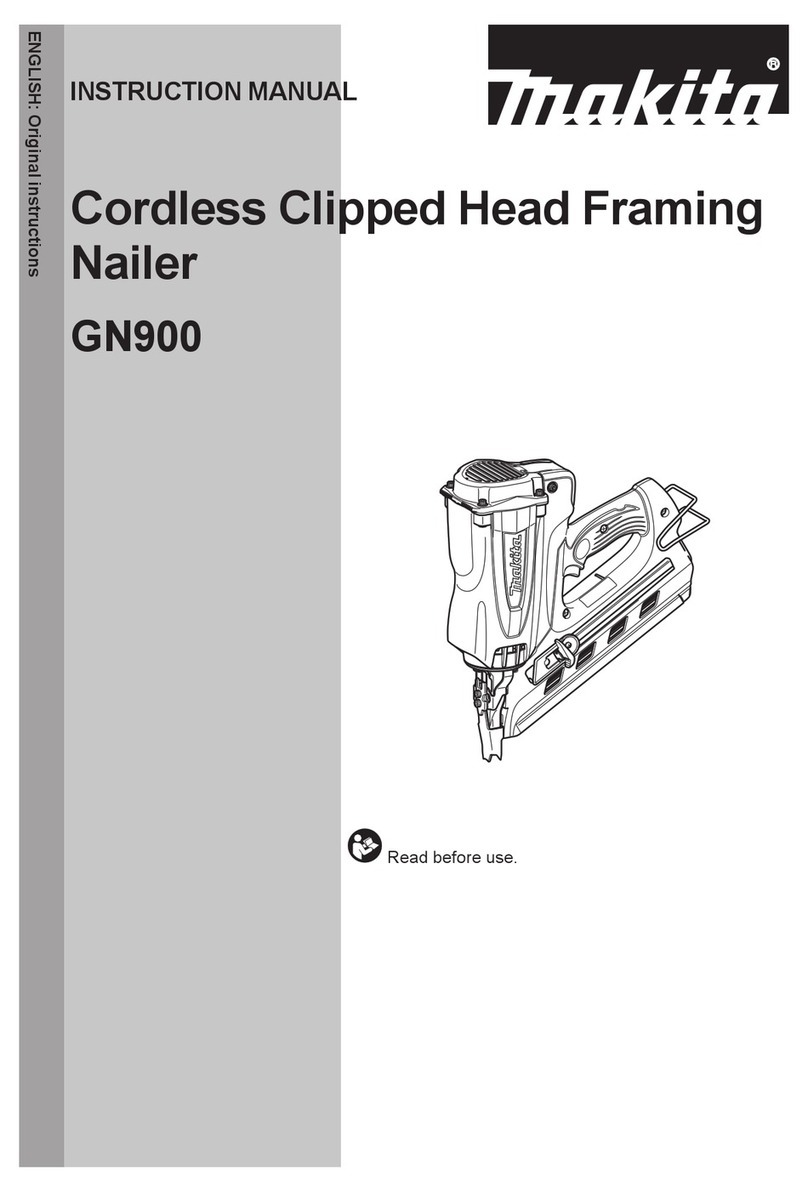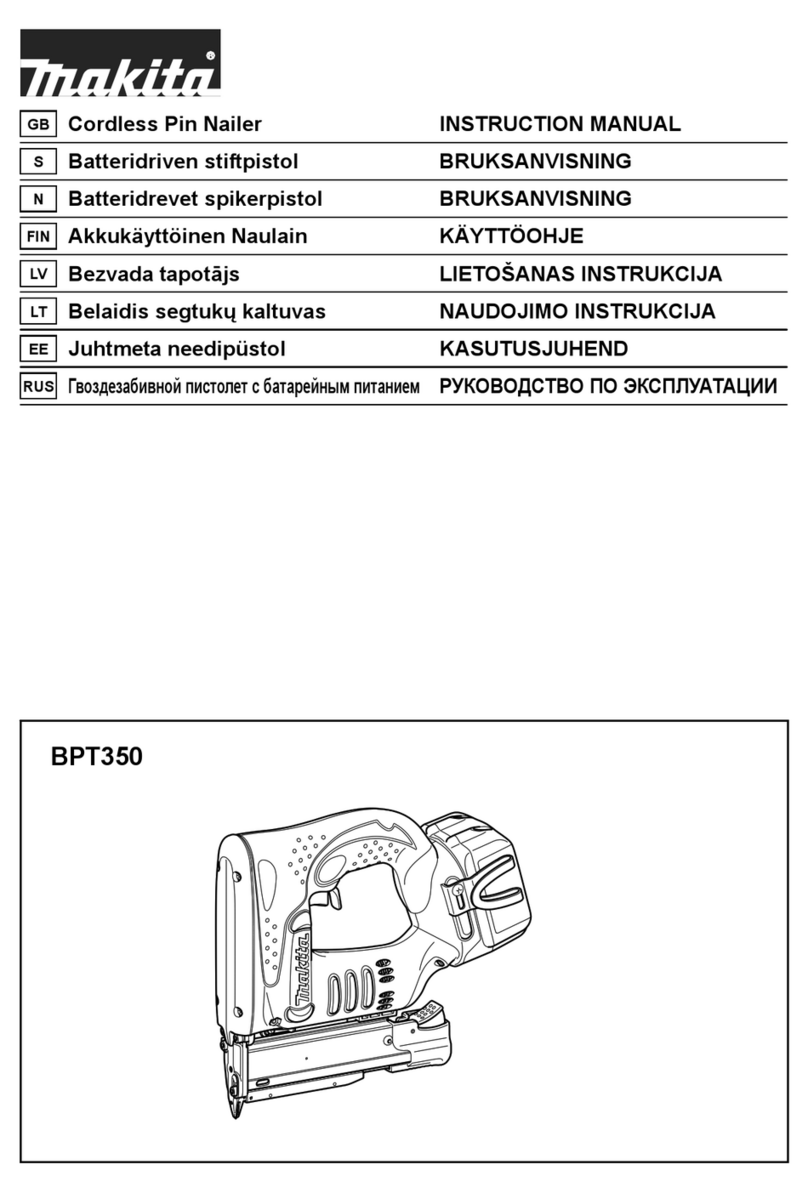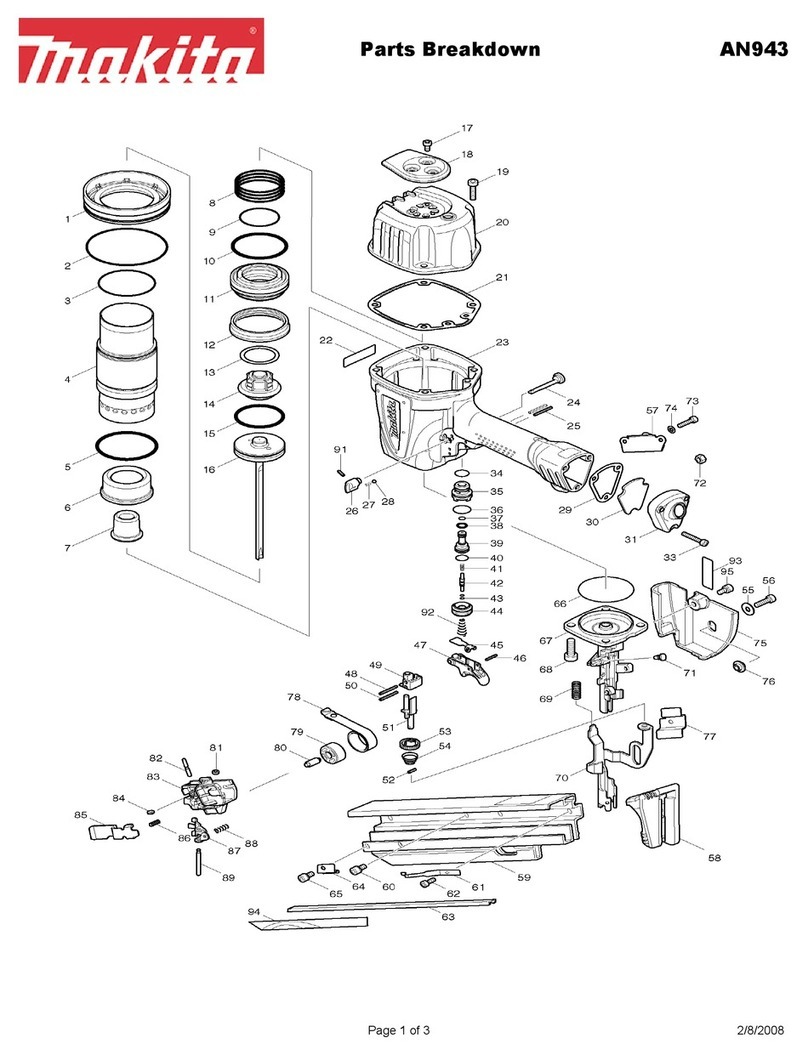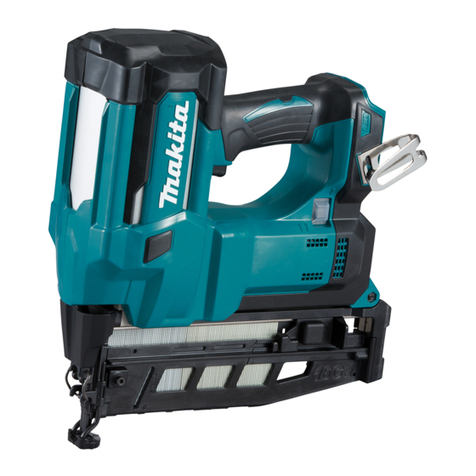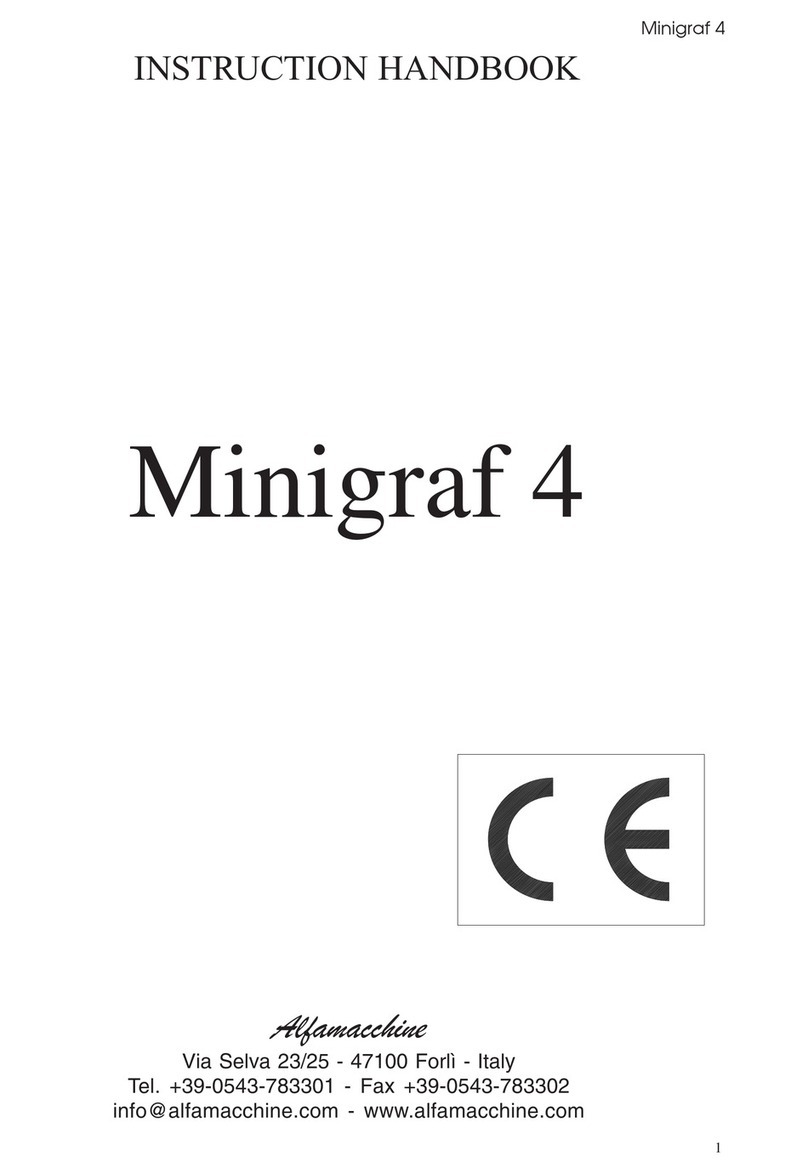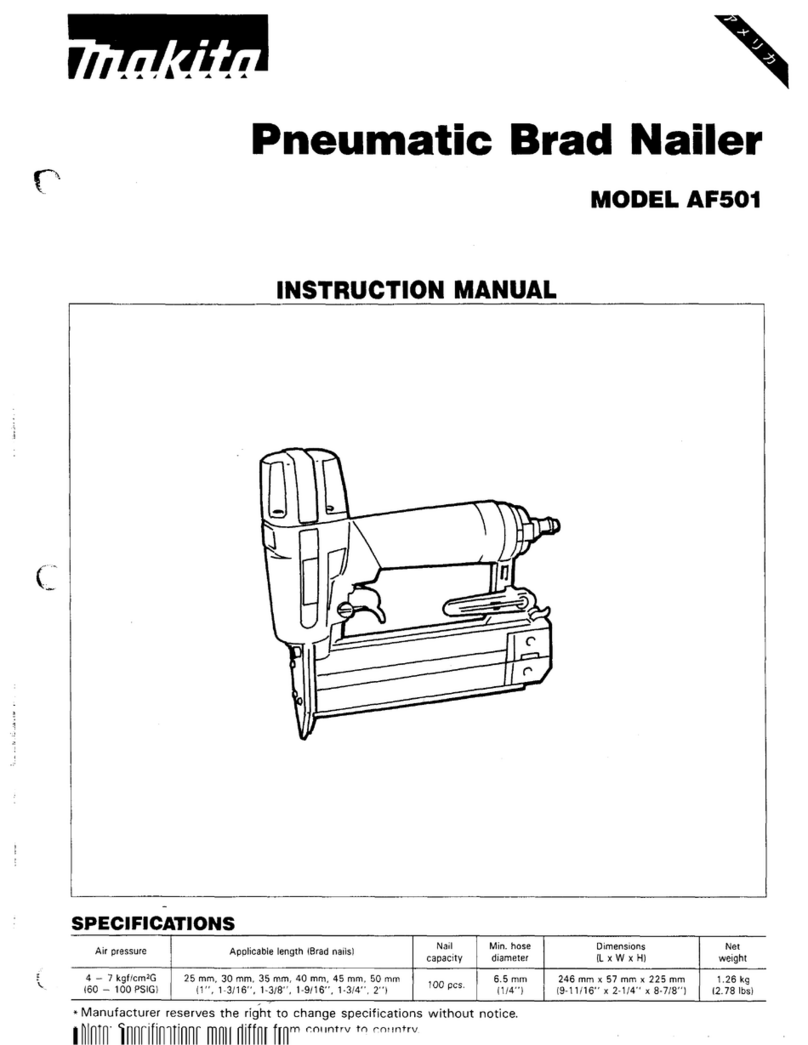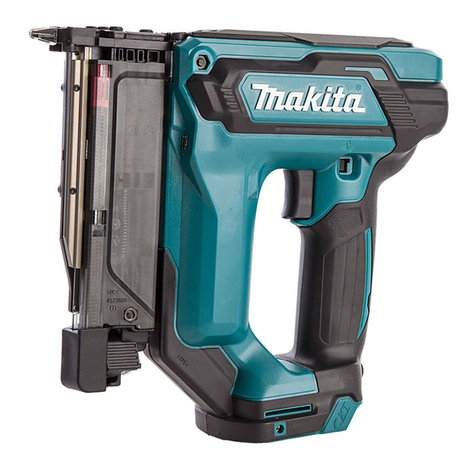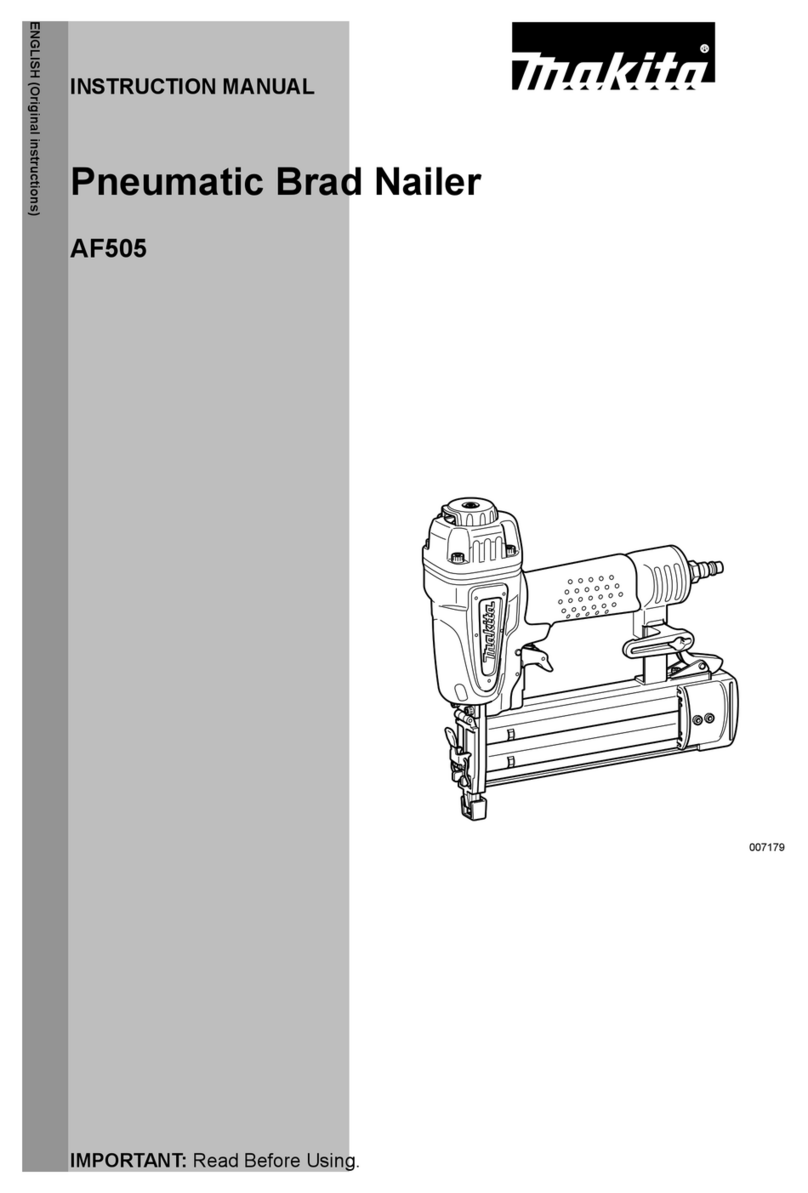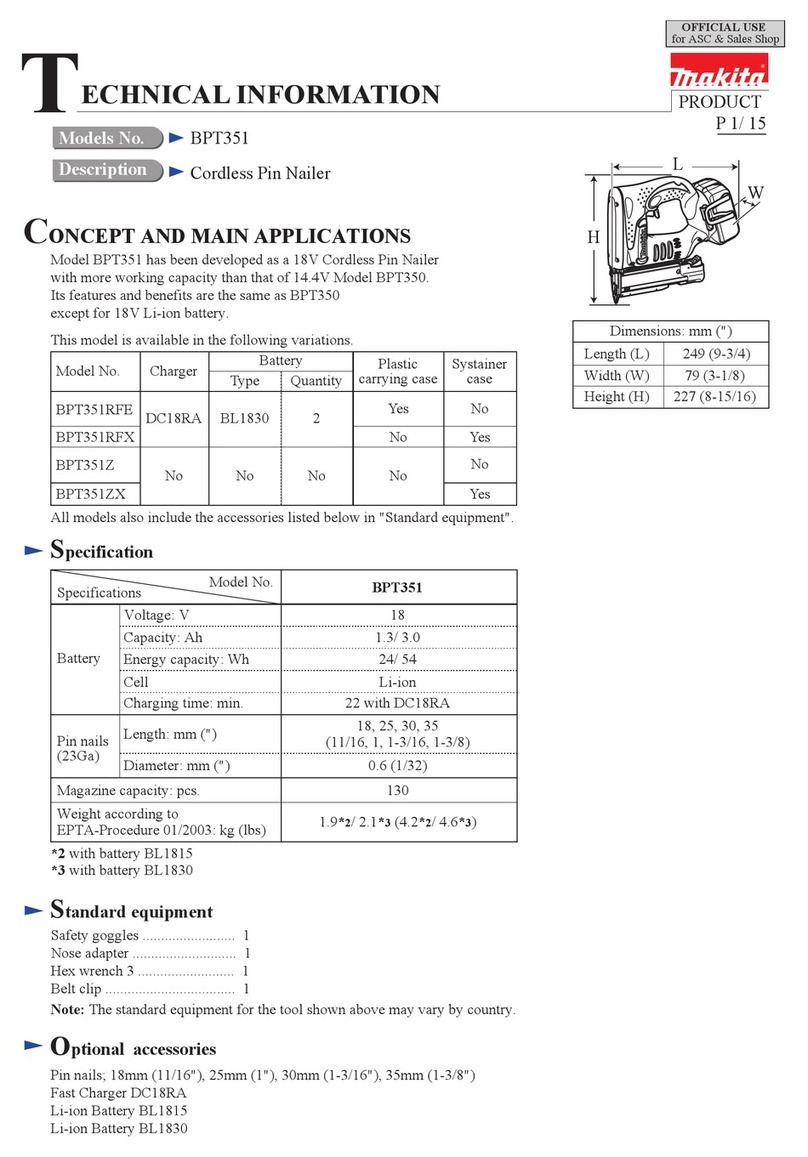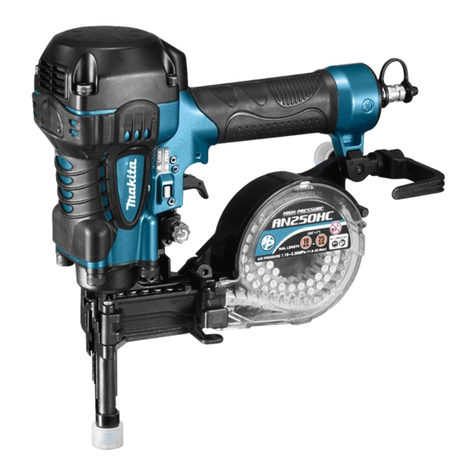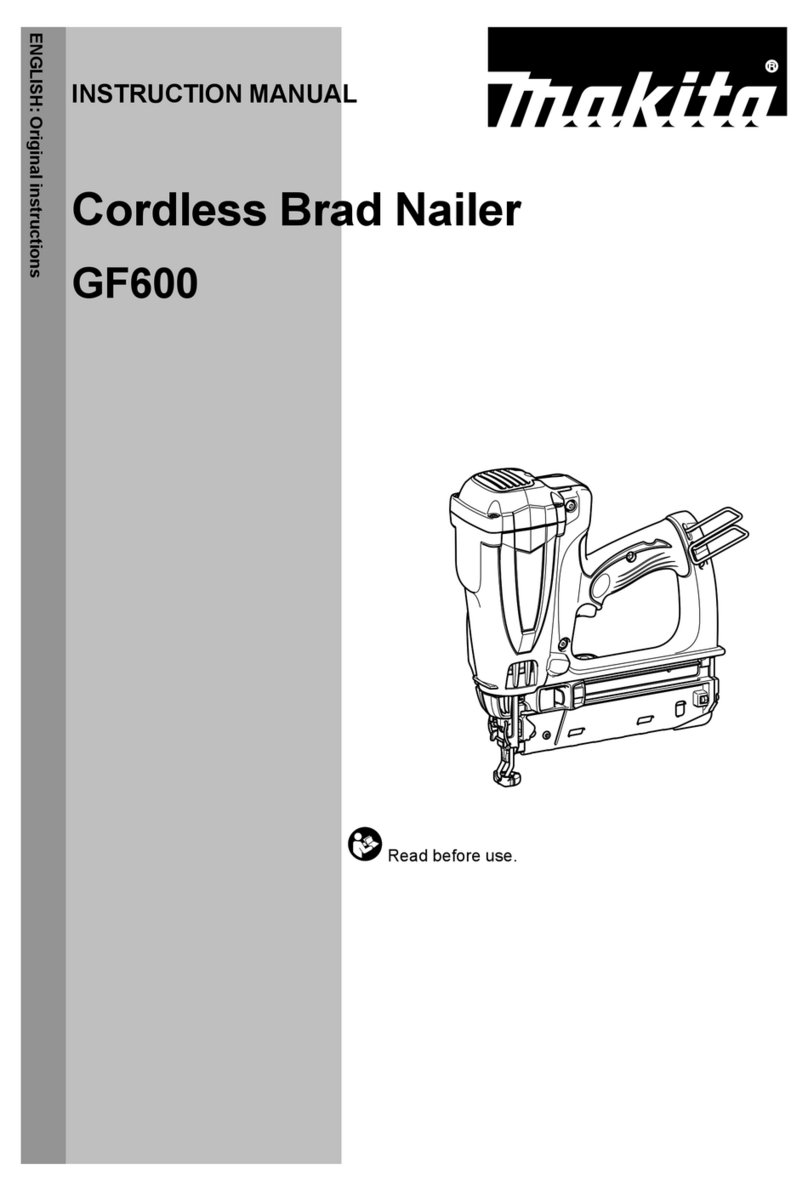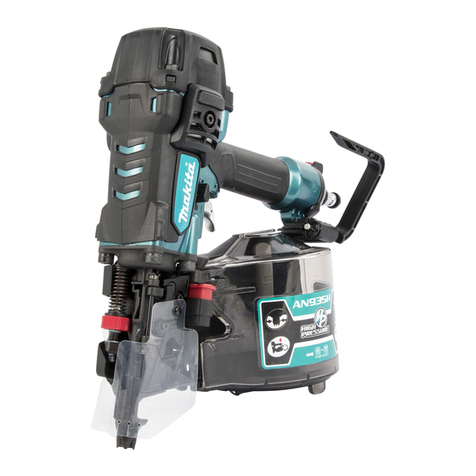
7ENGLISH
4. Appropriate hearing protection shall be worn.
5. Use the correct energy supply as directed in
the instruction manual.
6. Do not use the tool on moving platforms or
back of trucks. Sudden movement of the platform
may lose control of the tool and cause injury.
7. Always assume that the tool contains
fasteners.
8. Do not rush the job or force the tool. Handle
the tool carefully.
9. Watch your footing and maintain your balance
with the tool. Make sure there is no one below
when working in high locations, and secure the air
hose to prevent danger if there is sudden jerking
or catching.
10. On rooftops and other high locations, drive
fasteners as you move forward. It is easy to lose
your footing if you drive fasteners while inching
backward. When driving fasteners against perpen-
dicular surface, work from the top to the bottom.
You can perform driving operations with less
fatigue by doing so.
11. A fastener will be bent or the tool can become
jammed if you mistakenly drive fastener on
top of another fastener or strike a knot in the
wood. The fastener may be thrown and hit
someone, or the tool itself can react danger-
ously. Place the fasteners with care.
12. Do not leave the loaded tool or the air com-
pressor under pressure for a long time out in
the sun. Be sure that dust, sand, chips and
foreign matter will not enter the tool in the
place where you leave it setting.
13. Never attempt to drive fasteners from both the
inside and outside at the same time. Fasteners
may rip through and/or y off, presenting a grave
danger.
Repetitive motions hazards
1.
When using a tool for long periods, the operator
may experience discomfort in the hands, arms,
shoulders, neck, or other parts of the body.
2. While using a tool, the operator should adopt
a suitable but ergonomic posture. Maintain
secure footing and avoid awkward or off-bal-
anced postures.
3.
If the operator experiences symptoms such as
persistent or recurring discomfort, pain, throb-
bing, aching, tingling, numbness, burning sen-
sation, or stiffness, do not ignore these warning
signs. The operator should consult a qualied
health professional regarding overall activities.
4. The continuous use of the tool may cause
repetitive strain injury due to recoil produced
by the tool.
5. To avoid repetitive strain injury, the operator
should not overreach or use excessive force.
Additionally, the operator should take a rest
when feeling fatigue.
6. Conduct a risk assessment regarding repeti-
tive motion hazards. It should focus on mus-
cular-skeletal disorders and be preferentially
based on the assumption that decreasing
fatigue during work is effective in reducing
disorders.
Accessory and consumable hazards
1. Disconnect the energy supply to the tool, such
as air or gas or battery as applicable, before
changing/replacing accessories such as work-
piece contact, or making any adjustments.
2. Use only the sizes and types of accessories
that are provided by the manufacturer.
3.
Use only lubricants recommended in this manual.
Workplace hazards
1. Slips, trips and falls are major causes of work-
place injury. Be aware of slippery surfaces
caused by use of the tool and also of trip haz-
ards caused by the air line hose.
2. Proceed with additional care in unfamiliar
surroundings. Hidden hazards may exist, such
as electricity or other utility lines.
3. This tool is not intended for use in potentially
explosive atmospheres and is not insulated
from coming into contact with electric power.
4. Make sure there are no electrical cables, gas
pipes etc. that could cause a hazard if dam-
aged by use of the tool.
5. Keep work area clean and well lit. Cluttered or
dark areas invite accidents.
6.
There may be local regulations concerning noise
which must be complied with by keeping noise
levels within prescribed limits. In certain cases,
shutters should be used to contain noise.
Dust and exhaust hazards
1. Always check your surroundings. The air
exhausted from the tool may blow dust or
objects and hit operator and/or bystanders.
2. Direct the exhaust so as to minimize distur-
bance of dust in a dust lled environment.
3. If dust or objects are emitted in the work area,
reduce the emission as much as possible to
reduce the health hazards and risk of injury.
Noise hazards
1. Unprotected exposure to high noise levels can
cause permanent, disabling, hearing loss and
other problems such as tinnitus (ringing, buzz-
ing, whistling or humming in the ears).
2. Conduct a risk assessment regarding noise
hazards in the work area and implement appro-
priate controls for these hazards.
3. Appropriate controls to reduce the risk may
include actions such as damping materials to
prevent workpieces from "ringing".
4. Use appropriate hearing protection.
5. Operate and maintain the tool as recom-
mended in these instructions, to prevent an
unnecessary increase in noise levels.
6. Take noise reduction measures, for exam-
ple placing workpieces on sound damping
supports.
Vibration hazards
1. The vibration emission during operation
depends on the gripping force, the contact
pressure force, the working direction, the
adjustment of energy supply, the workpiece,
the workpiece support. Conduct a risk assess-
ment regarding vibration hazards and imple-
ment appropriate controls for these hazards.
